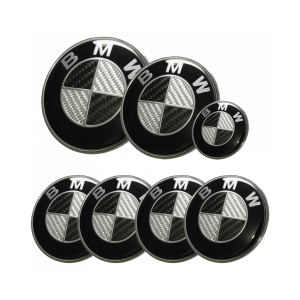crankshaft seal replacement
Understanding Crankshaft Seal Replacement A Comprehensive Guide
The crankshaft seal, an integral component of your vehicle's engine, plays a vital role in maintaining engine performance and longevity. Situated between the crankshaft and the engine block, this seal prevents oil leakage and maintains pressure within the engine. Over time, however, the crankshaft seal can wear out due to factors such as heat, age, and mechanical stress, leading to potential engine damage if not addressed promptly. This article provides a thorough understanding of crankshaft seal replacement, including its signs, procedure, and tips for successful replacement.
Signs Your Crankshaft Seal Needs Replacement
Recognizing when your crankshaft seal requires replacement can save you from extensive engine damage. Here are some common signs to look out for
1. Oil Leaks The most prominent sign of a failing crankshaft seal is an oil leak. If you notice oil pooling under your vehicle or stains on your driveway, it's essential to investigate further.
2. Oil Pressure Issues A worn seal can lead to a drop in oil pressure. If your dashboard oil pressure light illuminates intermittently, it may indicate a problem with the crankshaft seal.
3. Increased Exhaust Smoke If the seal is leaking oil into the combustion chamber, it may produce blue smoke from the exhaust. This indicates that oil is burning alongside fuel, affecting your vehicle's performance.
4. Unusual Engine Noises As oil leaks out, the engine components may become less lubricated, leading to friction and resulting in unusual noises, such as knocking or grinding sounds.
Tools and Materials Needed for Replacement
Before embarking on a crankshaft seal replacement, ensure you have the necessary tools and materials ready. Here's a list to guide you
- Socket set and wrenches - Screwdrivers (flat and Phillips) - Crankshaft seal puller (optional, but useful) - New crankshaft seal (ensure it matches your vehicle's specifications) - Engine oil - Clean rags for oil cleanup - Torque wrench - Gasket scraper (if needed) - Safety gloves and goggles
Step-by-Step Guide to Crankshaft Seal Replacement
crankshaft seal replacement

1. Preparation Ensure the vehicle is parked on a level surface, and disconnect the battery for safety. If needed, lift the car using jack stands for better access.
2. Drain Oil Before starting, drain the engine oil to avoid spills when removing the old seal. Make sure to keep an oil pan under the oil pan to catch the draining oil.
3. Remove Obstructions Depending on your vehicle, you may need to remove the crankshaft pulley, harmonic balancer, or other components that obstruct access to the crankshaft seal. Take care to mark the positions of any removed parts for easier reassembly.
4. Remove the Old Seal With the crankshaft exposed, carefully use a seal puller or a screwdriver to pry out the old crankshaft seal. Be cautious not to damage the crankshaft or surrounding components.
5. Clean the Area Use a clean rag to wipe down the crankshaft and the housing where the new seal will be installed. Any dirt or debris can compromise the new seal's effectiveness.
6. Install the New Seal Lightly lubricate the lip of the new crankshaft seal with engine oil. Align it with the seal housing and gently tap it into place using a seal driver or a similar tool. Ensure it sits flush with the engine block.
7. Reassemble Replace any parts that were removed earlier, such as the harmonic balancer or crankshaft pulley. Be sure to tighten all bolts to the manufacturer’s specifications using a torque wrench.
8. Refill Engine Oil Pour new engine oil into the engine, following the manufacturer's recommended oil type and capacity. Reconnect the battery.
9. Test the Repair Start up your vehicle and let it idle for a few minutes. Check for leaks around the new seal and monitor oil pressure to ensure everything is functioning correctly.
Conclusion
Replacing a crankshaft seal can significantly improve your engine's reliability and performance, preventing costly repairs. If you are not equipped with the necessary skills or tools, don’t hesitate to seek professional help. Regular maintenance and timely repairs will ensure your vehicle runs smoothly for years to come. Understanding the crankshaft seal's role can empower you as a vehicle owner to keep your engine in optimal condition.
-
The Ultimate Guide to Car Repair Kits: Tools and Essentials Every Driver Should Own
News Aug.01,2025
-
The Complete Guide to Oil Pan Gaskets: Sealing Engine Leaks the Right Way
News Aug.01,2025
-
Preventing Oil Leaks: A Complete Guide to Oil Pan Gaskets and Drain Seals
News Aug.01,2025
-
Everything You Need to Know About Oil Pan Gaskets and Drain Plug Seals
News Aug.01,2025
-
Essential for Car Owners: How to Use a Car Repair Kit to Deal with Minor Breakdown
News Aug.01,2025
-
Comprehensive Guide to Engine Oil Sump Gaskets and Related Seals
News Aug.01,2025
-
The Ultimate Guide to Boat Propeller Bearings and Trailer Wheel Bearings
News Jul.31,2025
Products categories















